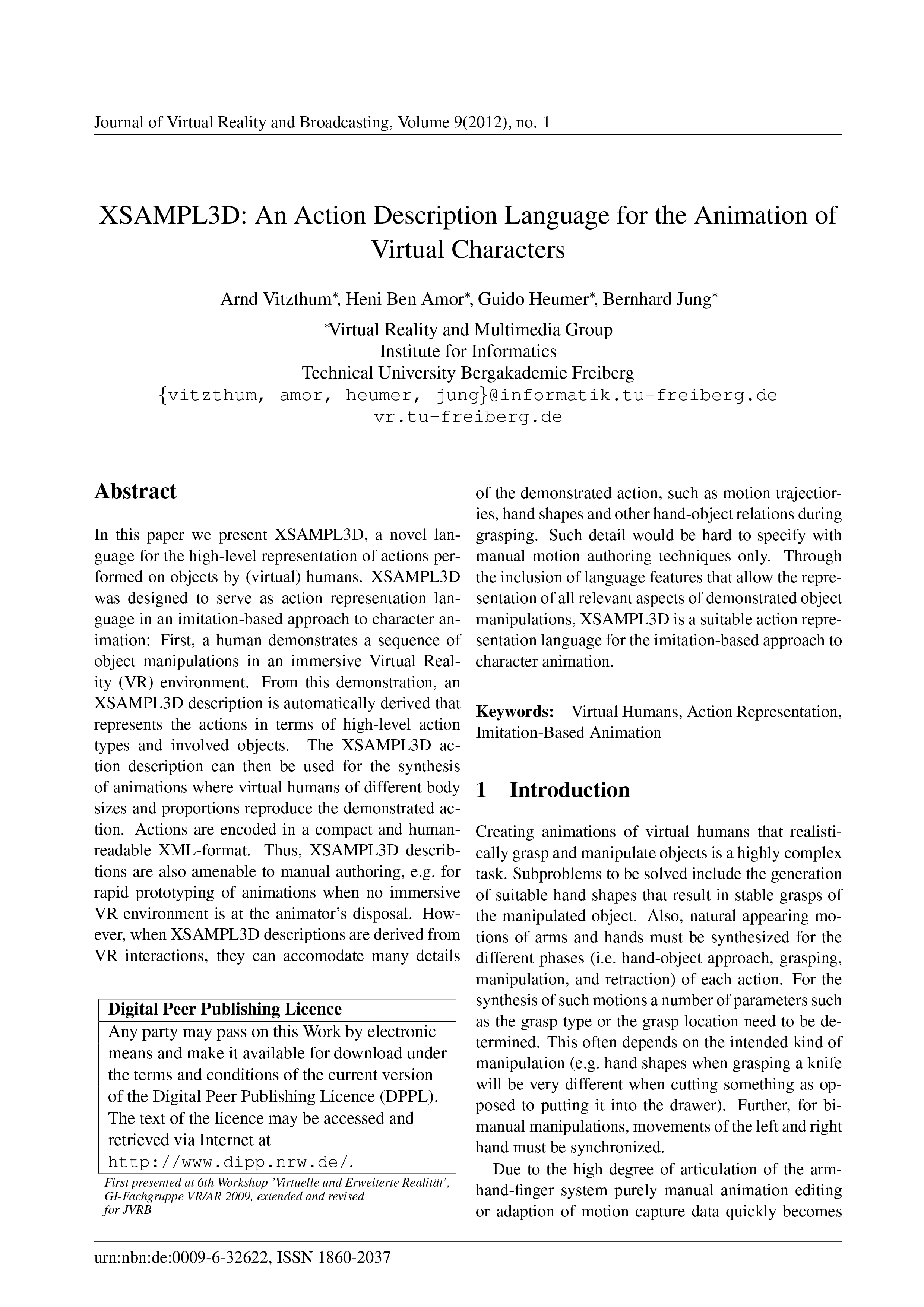XSAMPL3D: An Action Description Language for the Animation of Virtual Characters
DOI:
https://doi.org/10.20385/1860-2037/9.2012.1Keywords:
Action Representation, Imitation Based Animation, Virtual HumansAbstract
In this paper we present XSAMPL3D, a novel language for the high-level representation of actions performed on objects by (virtual) humans. XSAMPL3D was designed to serve as action representation language in an imitation-based approach to character animation: First, a human demonstrates a sequence of object manipulations in an immersive Virtual Reality (VR) environment. From this demonstration, an XSAMPL3D description is automatically derived that represents the actions in terms of high-level action types and involved objects. The XSAMPL3D action description can then be used for the synthesis of animations where virtual humans of different body sizes and proportions reproduce the demonstrated action. Actions are encoded in a compact and human-readable XML-format. Thus, XSAMPL3D describtions are also amenable to manual authoring, e.g. for rapid prototyping of animations when no immersive VR environment is at the animator's disposal. However, when XSAMPL3D descriptions are derived from VR interactions, they can accomodate many details of the demonstrated action, such as motion trajectiories,hand shapes and other hand-object relations during grasping. Such detail would be hard to specify with manual motion authoring techniques only. Through the inclusion of language features that allow the representation of all relevant aspects of demonstrated object manipulations, XSAMPL3D is a suitable action representation language for the imitation-based approach to character animation.
Additional Files
Published
2012-02-10
Issue
Section
GI VR/AR 2009





